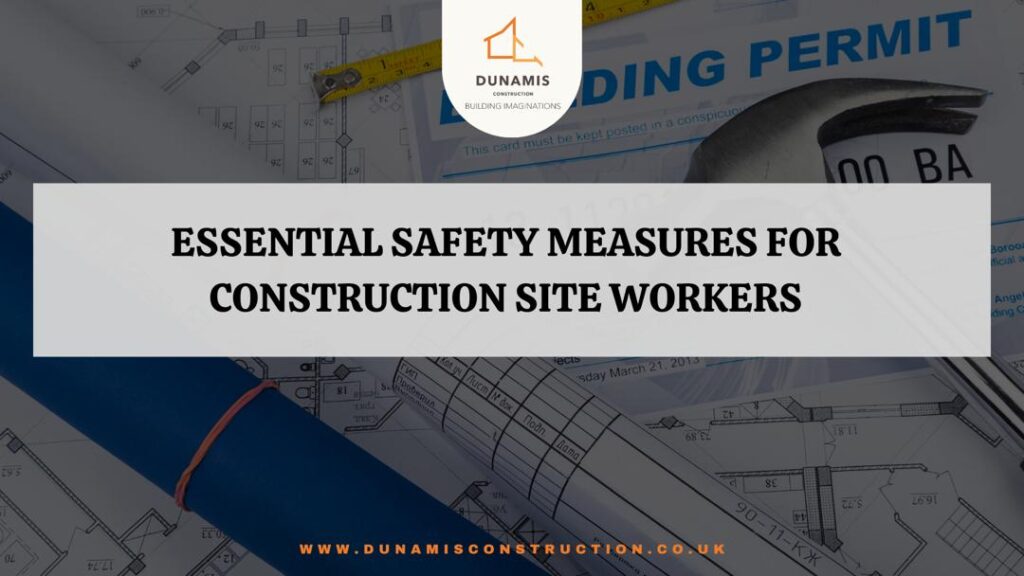Construction sites are inherently dangerous environments. Every day, workers face a myriad of risks, from falls and electrocution to heavy machinery accidents. To mitigate these hazards and ensure the safety of all personnel, it’s imperative to adhere to strict safety protocols. Here are some essential safety measures for construction site workers:
Personal Protective Equipment (PPE)
Personal Protective Equipment is the first line of defense for workers on a construction site. Every worker should be equipped with the necessary PPE, including:
– Hard hats to protect against head injuries from falling objects.
– Safety glasses or face shields to protect eyes from debris and harmful substances.
– High-visibility vests to ensure workers are visible, especially around heavy machinery.
– Steel-toed boots to protect feet from heavy objects.
– Gloves to shield hands from cuts, abrasions, and chemical exposure.
– Hearing protection in areas with high noise levels.
Proper training on the correct usage and maintenance of PPE is equally important to ensure its effectiveness.
Fall Protection
Falls are among the most common causes of injuries and fatalities in construction. Implementing fall protection measures is crucial, especially when working at heights. Key fall protection strategies include:
– Guardrails: Installing guardrails around edges and openings can prevent accidental falls.
– Harnesses and lanyards: Workers should use safety harnesses tied off to secure anchor points when working at heights.
– Safety nets: Positioned below work areas to catch workers in the event of a fall.
– Scaffolding safety: Ensure that scaffolding is properly erected and inspected regularly. Workers should be trained on safe scaffolding practices.
Proper Training and Certification
All workers should undergo comprehensive safety training relevant to their tasks and the equipment they use. This training should cover:
– Equipment operation: Workers must be trained and certified to operate machinery and tools safely.
– Hazard recognition: Teaching workers to identify and mitigate potential hazards on site.
– Emergency procedures: Workers should be familiar with site-specific emergency plans, including evacuation routes and first aid procedures.
– Ongoing education: Regular refresher courses to keep workers updated on the latest safety protocols and technologies.
Site Safety Inspections and Audits
Regular safety inspections and audits help identify potential hazards and ensure compliance with safety regulations. These inspections should be carried out by qualified personnel who can:
– Spot hazards: Identify any unsafe conditions or practices.
– Ensure equipment maintenance: Verify that all tools and machinery are in good working condition.
– Review safety protocols: Ensure that all safety measures are being properly implemented and followed.
Documentation of these inspections and corrective actions taken should be maintained to improve overall site safety.
Safe Lifting Practices
Manual handling of heavy materials can lead to musculoskeletal injuries. Workers should be trained on safe lifting techniques, such as:
– Assessing the load: Before lifting, workers should check the weight and stability of the object.
– Proper posture: Encouraging workers to lift with their legs, not their back, and to keep the load close to their body.
– Using lifting equipment: For heavier loads, mechanical aids such as cranes, hoists, or forklifts should be used.
Team lifting strategies should also be employed when handling particularly large or heavy objects.
Electrical Safety
Electrical hazards are a significant concern on construction sites. Proper precautions include:
– Lockout/Tag out procedures: Ensuring that electrical equipment is de-energized and properly tagged before maintenance.
– Grounding: All electrical tools and equipment should be properly grounded to prevent electric shocks.
– Insulation: Cables and wires should be insulated and kept clear of walkways to avoid tripping hazards and accidental contact.
– Qualified personnel: Only trained and certified electricians should handle electrical installations and repairs.
Proper Use of Tools and Machinery
Improper use of tools and machinery is a common cause of workplace injuries. To mitigate these risks:
– Tool inspections: Regularly inspect tools and equipment for damage or defects.
– Safe operating procedures: Workers should be trained on the correct use of each tool and machine, including emergency shutdown procedures.
– Machine guarding: Ensure that moving parts are properly guarded to prevent accidental contact.
Housekeeping and Site Organization
A well-organized construction site is a safer site. Good housekeeping practices including Clear walkways, Proper storage and waste management.
Health and Wellness Programs
Promoting health and wellness among construction workers can reduce the risk of accidents and injuries. Consider implementing regular health check-ups, monitor workers’ health, especially those involved in physically demanding tasks, mental health support to manage stress and mental health challenges, and designing workstations and tasks to reduce physical strain.
Communication and Safety Culture
Effective communication is essential for maintaining a safe work environment. Encourage a culture where safety is a priority by conducting regular safety meetings to discuss potential hazards and safety reminders, encouraging workers to report unsafe conditions or near-misses without fear of reprisal, safety leadership: Managers and supervisors should lead by example, consistently following and enforcing safety protocols.
Safety on a construction site is a collective responsibility that requires the commitment of all workers, supervisors, and management. By implementing and adhering to these essential safety measures, construction sites can minimize risks, protect workers, and ensure the successful completion of projects. Remember, a safe construction site is a productive one.

